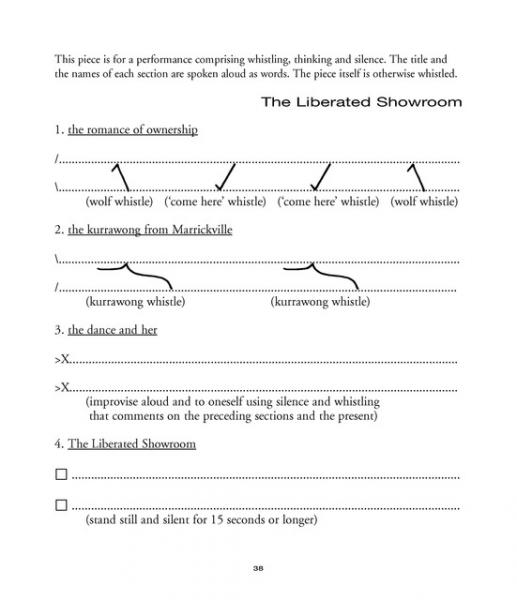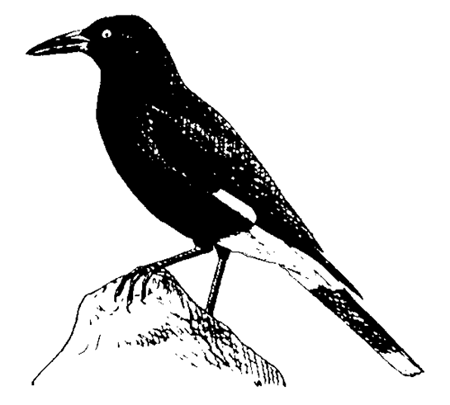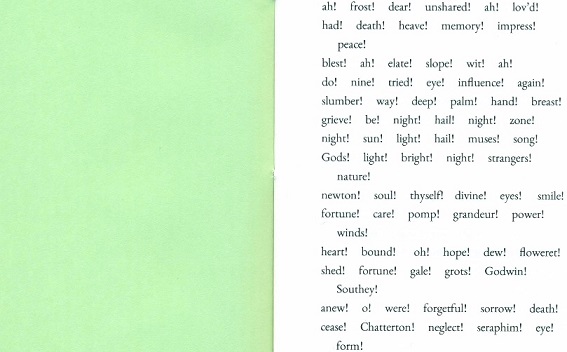The lives of the experimental poets 10-12
Stewart, Farrell, Breeze
10. Amanda Stewart
unsaidfieldsresonancesnotationsdistinctionsgapsabsencesdisjunctionsbetween
(“vice versa” I/T, p. 23)
In the voiceover to the 1991 film Eclipse of the Man-Made Sun, a film about the “language of the user” of atomic bombs and nuclear energy in times of proliferation, directed by Amanda Stewart and Nicolette Freeman, Stewart exposes the language of nuclear weapons. This is a film attentive to cinematic language and its particular modes of invention. Letters crop up red across the screen with the acronyms (Permissive Action Link [PAL]). So the language tells us, they’re your “pal”: the weapons are humanized, the victims, dehumanized. Later on, the documentary enters into increasing levels of abstraction — some might see a resemblance to the “Star Gate” sequence of 2001: A Space Odyssey — but it’s that abstraction that becomes the critique. The saturated color breaks away from the cinematic citation of advertisements and clips from mid-century Australian propagandizing around atomic energy and the use of uranium.*
Language, both civic and in the field of state governance, matters in the urgent sense that the radical poet, the cinepoet, can really expose its workings. The sense-of-language, of Stewart, plus the resonancesnotationsdisjunctionsbetweenit, is the experience, the experiment (both are related words) that gets us to the theoretical, philosophical, and ethico-critical extensions of the work. I say extensions because the work yearns outside of itself. Stewart’s work in radio for around twelve years (also with the Australian Broadcasting Commission [ABC], and setting up 2SER FM) and in documentary film and sound art, is the feedback loop of her poetics. In the 1980s Stewart would visit the USA, meeting Jackson Mac Low, Kenneth Gaburo, Bob Ashley, Phill Niblock, John Cage, forging a collaborative friendship also with Henri Chopin. In the 1990s Stewart spent time in Europe, working across from new music, radio, poetry, and performance.
Stewart’s cofounding, with Jim Denley, Chris Mann, Stevie Wishart, and Rik Rue, of the Machine for Making Sense, a text-sound ensemble, exposes sense. The sheer material “work” (though I also want to say “play”) of Denley’s instruments is similar in a way to Stewart’s and Mann’s, a wordwork down to the tiniest units of phonemic and nonphonemic (paralinguistic) sound (or what Stewart calls “extended language techniques”), taking morphemes-graphemes-phonemes, sounded prefixes and suffixes, to be meaning-making units. The group is a human machine that, quite literally, makes sense by opening up the possibility of sensemaking through these controlled, yet still unpredictable, means. Stewart’s work undoes, exposes, breaks language apart but also builds it, folding in everything from the language of national(ist) governance to Australian “vernacular,” doing so with a view to trenchant cultural and political critique.
The music-poetry analogy energizes, and historically has energized the works of poets like Stewart. In the poem “The Liberated Showroom” from her major publication I/T Selected Poems 1980–1996, some of the notationality of her work is apparent:

This is a rare instance of a poetic score in Australian poetry, a score for performance, for visual performance as well. To use a bifurcated definition of notationality, it has both character (neume, note, stroke), and score (line). But also silence and improvisation. The whistles are tones, almost tonemes (and their visual reconstruction in works like those of the Chinese linguist Yuen Ren Chao). There’s also a reference to Marrickville, a suburb in the Inner West of Sydney and one full of poets — also a suburb, like many in Sydney, with house prices so high that the “romance of ownership” is no longer. The Marrickville kurrawong is a bird, making the tonal stroke both a record of the kurrawong call and a call to imitate it.

(Pied Kurrawong, sketch from Australian National Botanic Gardens website)
“Experimental” and “radical” are intimate here. We might even think of the core per- of the word experiment here, the Indo-European for through, around, or to go over. This is work that endures, by means of experiment, to get to something else, avoid or go through or get around the stopgap of poetic conservatism, to get to another possibility in Australian poetics. Stewart’s work, doubtless some of the most ingenious in Australian poetry, continually invites marvel, making us rethink the connection between page and performance, sound and notation.
11. Michael Farrell
___
___
___
___
___
___
___
(from “daylight first,” a raiders guide n. pag.)
I begin with this “quotation” from Farrell’s 2008 collection, a raiders guide, New Poems, a book which I think offers us two aspects that are the best heritage of Australian experimental poetics: 1) a notational sense, or otherwise a sense of versification [mastery of “content,” — wordwork, in Farrell’s case, punctuation as a form of notation, sounded or not] … and 2) a sense of concept, a concern for the global conception of the book, down to numerics, organization, piecing together, the mapping of the poems as a collection or as a standalone work. Farrell’s prosody, or what I’ll call “dissonant prosody,” is delightful and extremely satisfying with regard to the material text.
Born in rural Australia in 1965, Farrell now resides in Melbourne and is a valuable part of the poetry community there and all around Australia. As a critic, Farrell is author of Writing Australian Unsettlement: Modes of Poetic Invention, 1796–1945, a book which extends the notion of unsettlement to a poetics, a poetry-in-theory that includes the kinds of writing not usually examined in Australian criticism. It is, fundamentally, a work of poetics criticism that, given Farrell is a poet-critic, is unique in itself and impactful on a larger scale of possibilities.
Experiment as unsettling is one way to read Farrell’s poetry as well. There are missing lines, precisely seven, in the (here epigraphed) poem “daylight first.” Words aren’t so much crossed out or erased as deleted. Reader / raider. The work of the negative in language is more, in my view, the work of deletion than the work of erasure. Or so I thought, until I came across another use of the dash in the three-part poem “broken hills,” a poem which takes its cue from the Australian long poem sequences of Laurie Duggan (specifically Blue Hills), and which contains the line “mal_colm frasers feet” — here, I think, the underscore, underbar, low line, low dash, as they can be called, not only lengthen or prolong the sounding of the work but even syncopate it, mark up its foot (or Fraser’s: Fraser was the former Australian prime minister [1930–2015]). Further, we can read some lines from part three (or the third “permutation”) of this same poem as using the underscore as a space to be filled in, as on an administrative form:
3.
dragone forma nube su il nazio
__ __ __ ca
blueeyed blond astronaut blueeyed blond as
The blurb to this book, which I find enduringly gripping, describes Farrell’s work in terms of music: “The poems are composed through the application of principles familiar from contemporary music — sampling and remixing, repetition and substitution, permutation and chance.” This is I think another pleasing achievement of Farrell’s work so far: to make in Australian poetry what contemporary music has made in music, to take those aspects of permutation and substitution and sampling and try them in the field of poetic language, or as Michael Brennan has put it, the action is like a certain screen music: “Given visually to the imagistic jump-cut, poetically to guerilla-like parataxis, Farrell’s work samples and dubs the music of our times.”
I wonder about the notationality of Farrell’s poetics, and I think the care Farrell puts to prosody leads to syncopation, and then sometimes to dissonance, but if it is read as dissonance, that aspect should be played up, not dismissed. Conceptualized, that is, I think, within a wider emancipation of dissonance in Australian poetry that comes from none other than its experimental traditions.

(page from SAME! SAME! SAME! SAME!, chapbook from SUS press, handmade Eddie Hopely)
Individual poems come well together as “albums” (as opposed to anthologies, floral combinations) in books like a raiders guide, yet conceptually Farrell can work in a total, watertight-streamlined way in other works like those above, SAME! SAME! SAME! SAME!, a poem which takes all the exclamation mark words in an Everyman edition of Samuel Taylor Coleridge’s Poems.
The effect is ecstatic, transports of delight. Farrell’s work (most recently Cocky’s Joy) feels like the essence of experiment … essence being the beginning again always, from nowhere in particular (though really here), and can go anywhere, and will.
12. Mez Breeze
“Gene.o.trash Labels
*.[this is not my colourful codepoetry
images of a small velveteenish head
all slippery N binary-glitched]
Newscl.o.ning through Ceramically-C][lashed N l][o][a][ded Teeth
*.[barcode rings and ICANN singing
“i can icann i will”]
Yr predict.cabled dark Statistical Response.*
][non][ X.pressi][ng on yr soft bellied throat][ve
P][oint][.O][f][.C][ontact][.*
Volume 1.3 of a L][ewd][urker ][re:][Orientation.*
Non-responsive][ness][-sided Participant Chip M.bedd.*
[S][l][ee.ping][count 1 seconds][s out of sight.*
.O.vert ][wo][Manifest Con][sciousness][tent.*
N.][di][visible Rawswarming(c).*
Free-Radi.cal N.al.y.sis][ter][ Clouding.*
Over.arch.ing Maleinglist Blue-Printing.*”
Mezopoetics. I’ve just returned from a conference convened by Keri Glastonbury and Emmett Stinson in the city of Newcastle called Australian Writing After the Internet. The keynote speaker, Justin Clemens, spoke of Mez Breeze’s work, as several others would; my paper was also on Breeze (and Catherine Vidler). For Clemens it is now possible to speak of “mezopoetics,” a post-digital poetics which, among other things, is bringing puns, synonymy, and equivocity back into code. Breeze’s work is a kind of Mezopoetics in that code becomes rhetorical again. The mimetic question is one of embeddedness; it is not that one can strip away the code and one has the same poem. Thoses surfaces are its essence. As I then argued, this is part of Breeze’s inhabitation and critique of the digital. Her post-digitality and her proximity to it in ways that subjectively and corporeally construct within or through, rather than rely upon, its technics.
So a poem like that above, from a work-collaboration with Darko Fritz titled _204_NO_CONTENT_ and which Breeze says is from “the Golden Phase of Mezangelle” can be read as rhetorically rich. What is curious here is just how much the “voicedness” of the poem comes through. Very soon after September 11, 2001, Breeze would do a Sydney (Artspace) exhibition entitled “::Reality Smearing::” in which surveillance concerns can be clearly heard in “stripped-back” writing:
“zombies of masked post-explosion-corpses::
deaf & dumbed-fumbling::
a sunset of fog loss & automobilic peace::
home videoed heros suck big bucked glory::
war rhetoric meets military melodrama::
cliches abcessing & abounding on CNNesqued TV::
blanket coverage of war::
ATM's blanked in a frozen rush::
billowing I.D. checks N stumbling newsreaders::
National Guardants in reality smears::
trauma networks vs bloodlust demeanors::
televised static force-colonised ...”

(screenshot from a Mez Breeze game The Dead Tower)
Rhizomezatics. If post- or late-digital, Breeze’s virtual ecologies critique the dark structures of our reality-systems. The text-game, a game in which one moves through a landscape. These are borne of experience. Breeze’s birthplace was rural Australia, and this informs another aspect of her work perhaps less emphasized: animals and ecologies, landscape as system … as ecosystem. Land not to be “humancentrically plundered” (qtd. from private correspondence).
Like many I was thrilled about the recent publication of Mez Breeze’s print book ATTN: Solitude. Combined now with Human Readable Messages_[Mezangelle 2003-2011] I think of these two works as a kind of proto-modular long poem, ATTN Solitude collecting her codewurks from 2011 –2016, and Human Readable Messages from 2003–2016. Really this is a sustained work over a decade from 2003–2017. I like that Florian Cramer blurbs the book and starts out by saying “Don't mistake this for an experimental poetry book.” As Cramer points out, the book’s content is text-streaming content, net.art email forums, chats, correspondence, online gaming, web design, internet memes, etc. … but Breeze is using these forms of composition well after they have ceased being used. Breeze is therefore “post-Internet” Cramer says in the sense that online and offline, digital and analogue, etc., are no longer separated.
These are important questions, but for me what’s crucial is where Cramer emphasizes, as obvious as it may sound, the “languageness” of Mezangelle, embedded and embodied, that it works at the “micro level of language” as he said the text streaming is “wired to every syllable.” In Words Made Flesh (long ago now in 2005) Cramer puts it well: “Slang and sexual language exposes mezangelle as a messy code, one that does not run on machines, but on a human imagination that encompasses machines and bodies alike.” Breeze is too a Machine for Making Sense, or corporeally a mezzing, a messing / amazing with sense. In ATTN: Solitude there is:

The post-digital criticality of passages like these is such that it causes us to “examine our tools.” Against Doxing. Against “Reactivist BullShotting.” In a sense, to read Mez Breeze as more than a “code poet” but as poet proper. Not a very “proper” poet, perhaps, although in some senses no different, for Breeze is one that resists any pigeonholing; a “mezopoet” we could say is a poetic subjectivity of parts, an echoic subjectivity.
A mezzo- an in-betweener, a fresh breeze, in between the post-digital and its resistant poetics, a poet who makes poet (and the poet’s critic) reexamine the tools of their surroundings, their surveilling, this s(urr)ounded poetics. Woken from our late digital zombiedom, we read.
* A well-known instance is Woomera, otherwise the “Woomera Range Complex” established in South Australia for defense and nuclear testing. The name was chosen by Alfred George Pither of Royal Australia Air Force (RAAF), appropriating the term for an Indigenous Australian spear-throwing device. Such language abstracts, obscures, aggravates the long history of the Australian government’s involvement in global imperialisms; in this case language that conjures domestic tyranny, from the Frontier Wars, is taken up to bolster the state’s international military capacity.
The Lives of the Experimental Poets